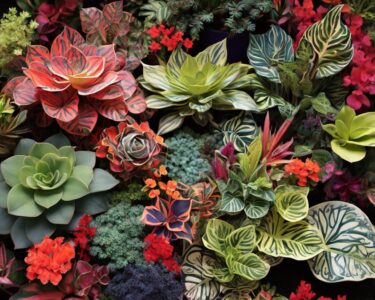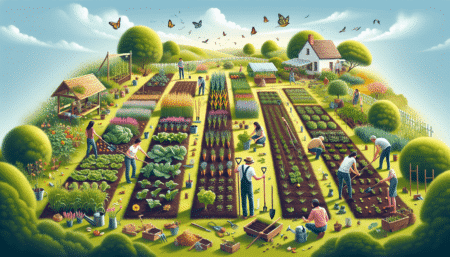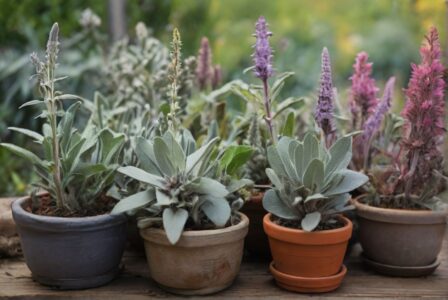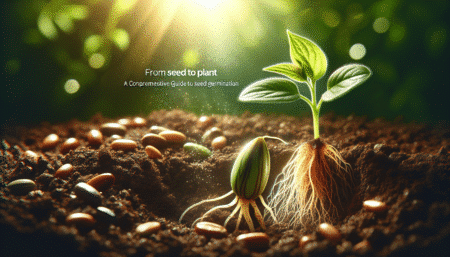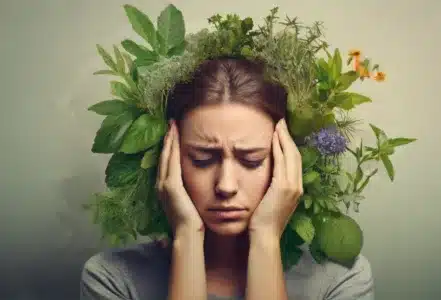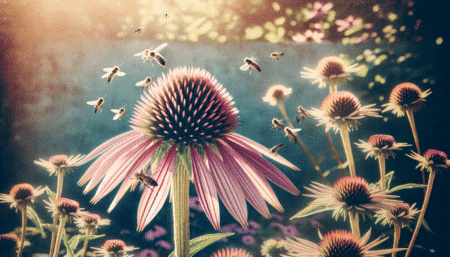- Introduction
- General information
- Growing conditions
- Use and advantages
- Potential challenges in cultivation
- Conclusion
- Conclusion
Here you can find our Salvia dorrii seeds!
1. introduction
Salvia dorrii, also known as the desert sage or desert purple sage, presents itself as an outstanding plant that fascinates not only with its stunning aesthetics, but also with its adaptability to challenging environmental conditions. Native to the arid regions of North America, this species can be defined by its adaptable nature and stunning purple flowers. Growing Salvia dorrii and using its seeds holds exceptional potential for garden enthusiasts and landscapers looking for a hardy yet beautiful plant. The positive impact of this plant on biodiversity and its ability to adapt to low rainfall conditions underlines the need to learn more about Salvia dorrii.
In this comprehensive guide, you will discover a wealth of information about Salvia dorrii, from basic facts about the species, optimal growing conditions, to its uses and the many benefits it offers. We also highlight the potential challenges of growing this hardy desert dweller and offer practical solutions. Whether you are interested in Salvia dorrii seeds for your own garden, interested in the specifics of purple sage Salvia dorrii or simply looking for detailed plant information, this guide will provide you with valuable knowledge to further deepen your enthusiasm for Salvia dorrii.
2. general information
Botanical classification
Salvia dorrii belongs to the genus sage ( Salvia ) within the labiate family (Lamiaceae). This plant genus is distributed almost worldwide and comprises between 850 and over 900 species. Salvia dorrii is assigned to the Salvia -subgenus Audibertia which comprises about 20 species, is mainly native to North America and is located in the center of biodiversity in the desert of the Great Basin.
Origin and history
Salvia dorrii was first described in 1863 under the name (basionym) Audibertia dorrii by Albert Kellogg in the Proceedings of the California Academy of Sciences. The new combination to Salvia dorrii (Kellogg) Abrams was first introduced in 1951 by the US botanist LeRoy Abrams in Illustrated Flora of the Pacific States published. The name Sage is derived from the Latin word salvia which means "to heal" or "healthy". This naming reflects the long history of true sage ( Salvia officinalis ) as a medicinal plant, which has been used in German-speaking countries since the early Middle Ages.
3. growing conditions
Soil quality
Salvia dorrii prefers rich or loamy soils, but good drainage is crucial. You should add sand to heavy or compact soils to improve drainage. When planting in pots, it is recommended to add perlite to ensure excellent drainage. The plant thrives in sandy, calcareous soils and adapts well to different soil types as long as the drainage is good.
Climatic requirements
Salvia dorrii likes plenty of sun and should receive at least 6 hours of direct sunlight daily to promote optimal flowering. Although most varieties will tolerate partial shade conditions, too much sunlight can burn the leaves of some varieties. Therefore, a little shade during the hottest hours of the day can be beneficial. The ideal temperature for growing Salvia dorrii is between 18°C and 27°C, with a maximum tolerable temperature of 35°C during the growth phase. Salvia dorrii is also frost-resistant and can be planted in regions where winter temperatures do not fall below -10°C. However, plants grown in pots should be protected from the winter cold by wrapping them up or moving them to a sheltered place.
4. use and advantages
Medical advantages
Salvia dorrii, known for its many uses in traditional medicine, was used by various indigenous peoples of North America. The plant was used as a natural remedy to relieve the symptoms of colds and flu by making infusions and decoctions from the leaves and stems. In addition, poultices made from the leaves were used to treat headaches and stomach aches as well as to relieve fever and pneumonia.
Salvia dorrii has also been used in incense ceremonies to promote spiritual cleansing and dispel negative energies. The antiseptic and bactericidal properties of sage make it a valuable ingredient in the treatment of infections of the oral cavity, such as gingivitis and angina pectoris.
Natural remedies
The versatile uses of Salvia dorrii also extend to aromatherapy, where the plant's essential oil has a calming effect on the nervous system. It helps to relieve tension and alleviate pain, making it an ideal ingredient in sleeping pills and painkillers. In addition, sage is often used to treat tooth and gum inflammation as well as tonsillitis and laryngitis.
The antioxidant properties of Salvia dorrii, especially the carnosine it contains, protect the body from damage caused by free radicals and support the immune system. This makes the plant a valuable ingredient for natural health promotion and disease prevention.
5. potential challenges in cultivation
Pest control
Leaf beetles and caterpillars can pose challenges when cultivating Salvia dorrii. Leaf beetles, which grow to 10-20 mm, leave small, round holes in leaves and petals. For light infestations, remove beetles, nymphs and eggs manually by dipping them in warm soapy water. For heavy infestations, it is recommended to apply organic insecticides such as neem oil or pyrethrum according to the instructions on the label. Synthetic insecticides such as carbaryl, permethrin and bifenthrin can also be effective, but should be used as a last resort.
Caterpillars, which appear in different colors and patterns, cause large, irregular holes in the plant parts. In case of heavy infestation, the application of an insecticide is advisable. An organic alternative is to spray the plants with Bacillus thuringiensis (Bt), a naturally occurring bacterium that kills caterpillars without harming other animals.
Diseases
The most common problems with Salvia dorrii in terms of disease include flower wilting and yellowing as well as drying of the leaves. These symptoms can be caused by sudden changes in the environment or the natural ageing process of the plant. If there is a lack of water, it is important to act immediately and water the plant thoroughly. Use rainwater at room temperature or filtered tap water. If there is a lack of nutrients, you should use a water-soluble fertilizer that is half as concentrated and work it carefully into the soil.
If Salvia dorrii is infected by bacterial or fungal pathogens, there is unfortunately no treatment that can cure the plant. In such cases, it is best to remove the infected plants and dispose of them safely to prevent further spread of the disease.
6. conclusion
Through this guide, we have gained a comprehensive understanding of the fascinating world of Salvia dorrii, the desert sage. From its stunning purple-blue flowers to its remarkable adaptability to arid conditions, this plant demonstrates just how diverse and resilient nature can be. The information presented highlights not only the aesthetic and ecological benefits of Salvia dorrii for gardens and landscapes, but also its value in traditional healing practices and the challenges associated with its cultivation.
Given the growing interest in sustainable gardening and biodiversity conservation, Salvia dorrii offers an inspiring opportunity to promote both. It is clear that cultivating and caring for this extraordinary plant not only enriches the home garden, but also helps to promote a healthy local ecosystem. In conclusion, the medicinal and aromatherapeutic applications, as well as the exploration of potential cultivation challenges, invite further research and experimentation for enthusiasts and professionals alike.




